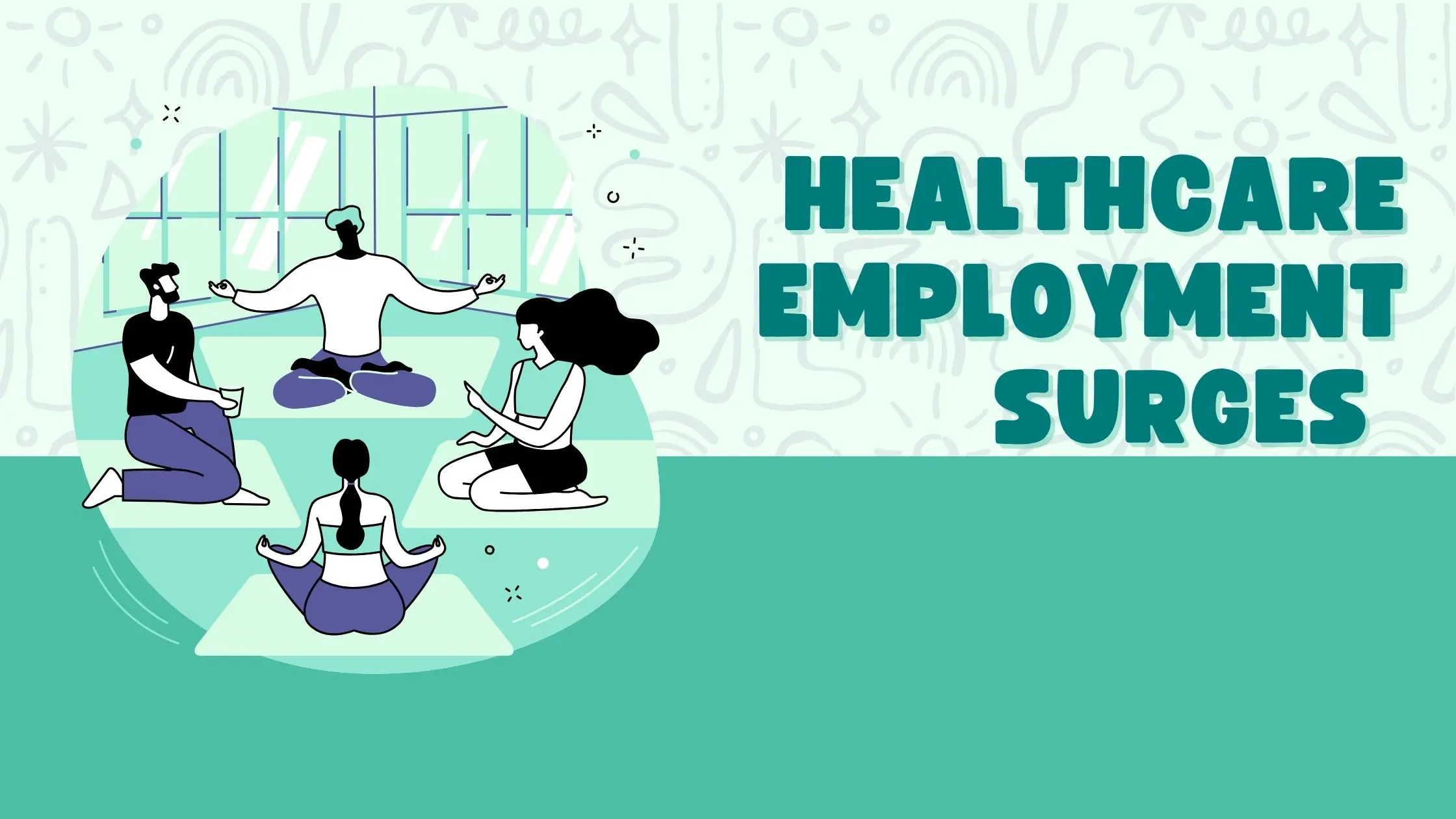Top Healthcare Trends of 2025: Impact on U.S. Employers
Explore the top healthcare trends of 2025 and their impact on U.S. employers, including rising costs, enhanced customer experience, women's health, GLP-1s, behavioral care, and Generative AI.

Christian Joshua
Published in News
The healthcare sector is currently undergoing substantial changes in 2025, influenced by technological advancements, evolving patient demands, and the increasing complexities of medical treatments. This transformation places significant pressure on U.S. employers, as their healthcare expenditures are predicted to rise by nearly 8% in 2025, marking the largest annual increase in over a decade. In response to these escalating costs, plan sponsors in 2025 will prioritize enhancing efficiency and eliminating waste. This will involve a greater focus on increasing member engagement, maximizing the utilization of benefits and well-being programs, and forging impactful partnerships to mitigate cost trends.
Receive Updates Straight Into Your Inbox Today. SIGN UP HERE.
Below are some of the most significant healthcare trends for 2025 and their projected impact on U.S. employers.
Get Periodic Updates Straight To Your Inbox. Sign Up To Our Newsletter Today.
Trend 1: Unprecedented Focus on Customer Experience in Healthcare Will Improve Benefit Utilization and Outcomes
In 2025, a paramount emphasis will be placed on improving the customer experience within healthcare. Modern consumers, influenced by companies like Apple, Netflix, and Amazon, have come to expect personalized and seamless interactions. This expectation now extends to healthcare, where patients seek convenience, customization, and user-friendliness.
Research indicates a strong desire among individuals for personalized healthcare services, often perceiving them as lacking. A Bain & Co. study revealed that 65% of healthcare consumers expect a more convenient experience. Similarly, the American Academy of Physician Associates found that 65% of consumers consider coordinating and managing healthcare to be overwhelming and time-consuming.
The objective for 2025 is to provide consistently straightforward healthcare experiences that align with individual needs and preferences. This aims to guide individuals to appropriate care at the right time and on their own terms. A primary method for achieving this is through personalized navigation and resources, leveraging demographic data to offer dynamic choices tailored to each person.
Digital technology plays a crucial role in this shift. The initial phase of digital transformation in healthcare saw increased adoption of technologies that streamline processes, enabling patients to schedule appointments, receive medication reminders, access personal health information, and obtain virtual care with remote monitoring.
The next evolution in healthcare experiences will involve integrating advanced AI and machine-learning algorithms to anticipate patient needs and recommend preventive measures. Furthermore, these platforms will facilitate seamless communication between patients and their care teams, enhancing the overall patient experience in areas such as medication adherence, proactive preventive scheduling suggestions, and necessary follow-ups/screenings.
This year will also bring improvements to health insurance experiences. Driving health insurance literacy will become crucial, as higher literacy is linked to increased vitality, better healthcare experiences, and greater utilization. According to research from Evernorth, 75% of adults with high health insurance literacy—defined as confidence in understanding and using health insurance benefits—are satisfied with their health benefits. This research also found that 94% of people with high health insurance literacy are satisfied with their health insurer.
Consumers desire to interact with their health plans through their preferred digital channels and receive effortless, personalized communications on plan updates and choices based on their health needs and past behaviors. There will be an increase in digital assistants that deliver curated topics based on individual needs, with AI-powered tools providing quick answers, personalized content, and real-time optimal actions. Ultimately, this phase of technological disruption in healthcare aims to improve health outcomes by ensuring patients can easily engage with their health plans to find needed care and remain engaged and proactive in managing their health throughout their care journey.
Programs and resources designed to promote health will continue to expand, including digital coaching, social connections, device/app connections, and digital well-being challenges and incentives.
Trend 2: Clinical Excellence in Women's Health and Condition-Specific Care to Reduce Costs, Eliminate Waste, and Increase Patient Satisfaction
In 2025, clinical excellence will be emphasized through benefits offering whole-person support, clinical guidance, and end-to-end integrated care models and solutions in areas such as women's health and condition-specific care. Integrated care models focusing on holistic patient care will become paramount. A review of 34 studies published in the National Library of Medicine found that integrated care models reduce costs, help eliminate waste, improve health outcomes, and increase patient satisfaction. Employers who facilitate access to these services are expected to see a healthier, more engaged workforce.
Improvements in Women's Health:
Historically, "women's health" has been narrowly defined, often associated only with pregnancy. However, healthcare professionals and policymakers now recognize that the scope of women's health extends significantly beyond obstetrics and gynecology. An Evernorth analysis of 7.4 million commercially insured individuals aged 13 to 64 revealed that while women constituted 50% of this population, they accounted for 53% of healthcare utilization and 57% of total care costs. Only 7% of the evaluated health conditions were unique to women, yet 69% of conditions represented in claims data were either more common or costlier in women, or both.
This year will see a greater push for substantial improvements in women's health, offering empathetic guidance that considers the entire person rather than just symptoms. This will involve a comprehensive understanding of the disproportionate impacts women face, the underlying causes of variations in their healthcare experiences, and ways to enhance healthcare service delivery and benefit design to better address women's specific needs.
Wraparound Care for People with Musculoskeletal Conditions:
Additionally, there will be a move towards condition-specific care programs designed to guide members to the appropriate care, at the right time, and with the correct provider. This approach will be most prevalent in treating high-cost conditions such as musculoskeletal (MSK) conditions, oncology, and cardiodiabesity. MSK conditions, which include arthritis, low back pain, and neck pain, affect over half of American adults and are a primary driver of healthcare expenditures in the U.S., estimated at $420 billion annually. Back conditions alone account for 29% of these costs and are the leading cause of sick days and disability leave, resulting in productivity losses of up to $40 billion per year.
The MSK care journey can be fragmented, and interventions may reach patients too late, leading to inflated costs, ineffective treatments, and unnecessary surgeries. To curb these costs, personalized treatment programs for individuals with spine, knee, hip, and shoulder conditions will emerge, aimed at guiding them to the correct care pathway. Early identification through predictive models will be crucial, as will digital guidance and engagement through personalized activities, assessments, content, treatment guidance support, and care navigation tools that direct patients to high-performing providers. Furthermore, dedicated care teams will be a key component of these programs.
- A Guided, Personalized, and Evidence-Based Approach to Cancer Care:
A 2024 survey of employers by the Business Group on Health indicated that cancer, for the third consecutive year, was the top condition driving employers' healthcare costs. This highlights the critical need for employers offering health insurance to prioritize end-to-end cancer care, including a greater focus on prevention and early detection, specialty drug management, seamless navigation and experience, and condition-specific resources and tools.
In a recent pilot, a guided, personalized, and evidence-based approach to cancer care improved outcomes and reduced costs. Over an 18-month period, the program increased the use of recommended treatment plans by 5.2%, leading to $24 million in savings within a large commercial population.
Over the year, there will be a shift towards a more guided and holistic approach to cancer care focused on:
- Value-based care models that assist patients in navigating the care delivery system and their health plan benefits.
- Building care plans for each member (and their caregivers) based on their specific needs.
- Identifying resources for financial needs or other community support, such as childcare, transportation, and meal delivery.
- Providing care coordination to help patients better understand treatment plans and coordinate care across various resources.
- Offering distress screening and behavioral health access and support, which are critical and often improve outcomes for cancer patients while lowering costs.
Proactive Management of Cardiodiabesity:
Medical and pharmacy costs associated with obesity, diabetes, and heart disease are expected to continue rising in 2025. The complexity of these conditions necessitates a tailored, data-driven, and innovative approach to decrease healthcare spending and save lives.
The utilization of GLP-1 drugs, primarily for treating obesity, diabetes, and heart disease, is projected to increase significantly. Research shows that 79% of employers reported heightened interest in obesity medications, including GLP-1s, among their covered members in 2024. While these medications are a standard treatment for diabetes (covered by 96% of employers in 2024), eligibility has expanded to include obesity (covered by 67% of employers in 2024) and cardiac conditions (covered by 34% of employers in 2024). Consequently, 97% of employers expressed concern about the long-term cost implications of GLP-1s.
Proactive management of chronic conditions is essential to control rising healthcare costs. In 2025, more employers are expected to implement wellness programs focused on preventing obesity, diabetes, and heart disease. There will be a greater emphasis on encouraging regular health screenings to detect and manage chronic conditions early and to identify cost-effective medication management strategies. Additionally, employers and health plans will seek ways to better manage GLP-1 expenditure through evidence-based prevention, early identification of at-risk patients, and urgent action to reduce patients' progression to worse health.
Trend 3: An Evolution in Behavioral Healthcare with Greater Focus on Navigation, Personalization, and Measurement
Currently, 30 countries globally identify mental health and well-being as their primary health issue. In the United States, statistics indicate that 1 in 4 people are dealing with mental health challenges. On average, Americans take 11 years to seek help for mental health issues, which can worsen a person's condition, leading to more severe symptoms and ultimately increasing the cost of care. Research has found that outpatient behavioral health treatment is associated with medical and pharmacy savings of up to $2,565 in the 15 months following diagnosis. The greatest savings were observed for patients who had at least three sessions with a therapist—referred to as therapeutic alliance.
Access to behavioral healthcare has improved considerably over the last 5 to 10 years, yet it remains an issue for many Americans. In 2025, there will be a greater shift towards integrating mental health into primary care to improve access, as well as advancements in behavioral care navigation through personalized assistance, identifying appropriate care methods, helping people find appointments, and providing 24/7 real-time clinical support. Adoption of virtual behavioral care will continue to grow, and greater uptake of predictive data models for earlier identification, provider matching, faster appointment times, and 100% follow-up is expected.
The field of behavioral healthcare must also evolve to better address the mental health crisis among America's youth and support their entire family unit. Diagnosed or undiagnosed, millions of young people are struggling, and many parents feel ill-equipped to manage the numerous related challenges impacting home and work life.
Soaring human and economic costs render the ongoing behavioral healthcare crisis and its ripple effect on parents, families, communities, and workplaces unsustainable for a thriving society. U.S. employers spend over $200 billion annually on behavioral health costs for employees and their dependents, a figure that excludes indirect costs such as lost productivity and missed work.
An evolution in behavioral measurement-based care will occur, as research shows standardized metrics are key to delivering quality treatments and better patient outcomes. “Standardized metrics ensure that we can measure the success and outcome of treatments broadly, to support a more standardized definition of quality in the industry. This data-driven approach, alongside the development of family support and clear industry outcomes specific to autism treatments, will be game changers in behavioral care over the next 12 to 18 months,” said Holgerson.
Trend 4: Generative AI Shaping Strategy and Growth in Healthcare
Healthcare is experiencing a significant transformation driven by the increasing adoption of generative AI.
Among U.S. healthcare leaders surveyed by McKinsey, 59% are currently partnering with third-party vendors to develop customized healthcare solutions, 24% plan to build solutions in-house, and 17% expect to purchase off-the-shelf generative AI products.
Additionally, generative AI will play a pivotal role in shaping strategy and growth within the healthcare industry. A study published in the Journal of the American Medical Association indicates that AI-driven models can improve health diagnostic accuracy by 30%.
As the use of generative AI continues to grow, there will be a greater focus on data security to protect member and patient privacy. Organizations will also think more strategically about the risk and legal frameworks governing the use of generative AI. A study by Deloitte found that 82% of healthcare organizations have or plan to implement governance and oversight structures for generative AI. This same research found that leaders see promise in generative AI for improving efficiencies (92%) and enabling quicker decision-making (65%).
Given that generative AI does not always provide accurate answers—at least not yet—keeping humans in the loop will remain a critical component.
As 2025 begins, the healthcare industry is poised for significant changes driven by these key trends. From enhancing customer experiences and prioritizing women's health to managing the rising costs of GLP-1 drugs, evolving behavioral healthcare, and adopting generative AI, the future of healthcare promises to be dynamic and transformative. Employers must remain informed and adaptable to capitalize on these trends and improve the overall healthcare landscape and outcomes for their workforces.

News
Could $1 Trillion in Medicaid Cuts Leave 16 Million Uninsured? Senate HELP Committee Wants Your Take
Have your say: How will $1T+ in Medicaid cuts affe...

News
Nannies, Tired of Job Creep? Here’s How to Break the Cycle for Good!
Fed up with job creep? Learn how nannies can set c...

News
Healthcare Employment Surges in May with 62,000 New Jobs
U.S. healthcare added 62K jobs in May, led by hosp...

News
Wisconsin Seniors Housing Secures $28 Million Bridge Loan
MONTICELLOAM closes $28M bridge loan for two Wisco...